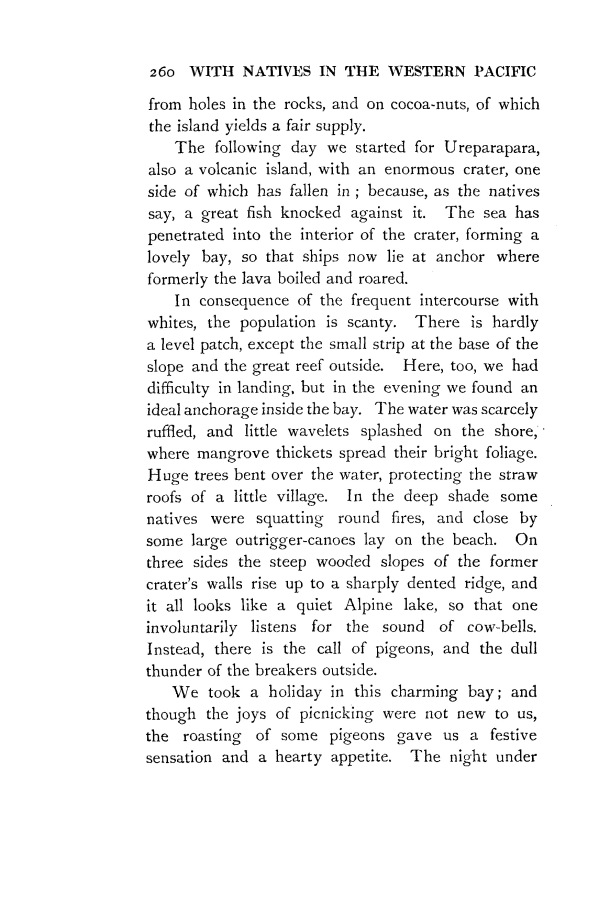|
|  [Note: this transcription was produced by an automatic OCR engine]
260 WITH NATIVES IN THE WESTERN PACIFIC
from holes in the rocks, and on cocoa-nuts, of which
the island yields a fair supply.
The following day we started for Ureparapara,
also a volcanic island, with an enormous crater, one
side of which has fallen in; because, as the natives
say, a great fish knocked against it. The sea has
penetrated into the interior of the crater, forming a
lovely bay, so that ships now lie at anchor where
formerly the lava boiled and roared.
In consequence of the frequent intercourse with
whites, the population is scanty. There is hardly
a level patch, except the small strip at the base of the
slope and the great reef outside. Here, too, we had
difficulty in landing, but in the evening we found an
ideal anchorage inside the bay. The water was scarcely
ruffled, and little wavelets splashed on the shore,"
where mangrove thickets spread their bright foliage.
Huge trees bent over the water, protecting the straw
roofs of a little village. In the deep shade some
natives were squatting round fires, and close by
some large outrigger—canoes lay on the beach. On
three sides the steep wooded slopes of the former
crater’s walls rise up to a sharply dented ridge, and
it all looks like a quiet Alpine lake, so that one
involuntarily listens for the sound of cow—bells.
Instead, there is the call of pigeons, and the dull
thunder of the breakers outside.
We took a holiday in this charming bay; and
though the joys of picnicking were not new to us,
the roasting of some pigeons gave us a festive
sensation and a hearty appetite. The night under
|